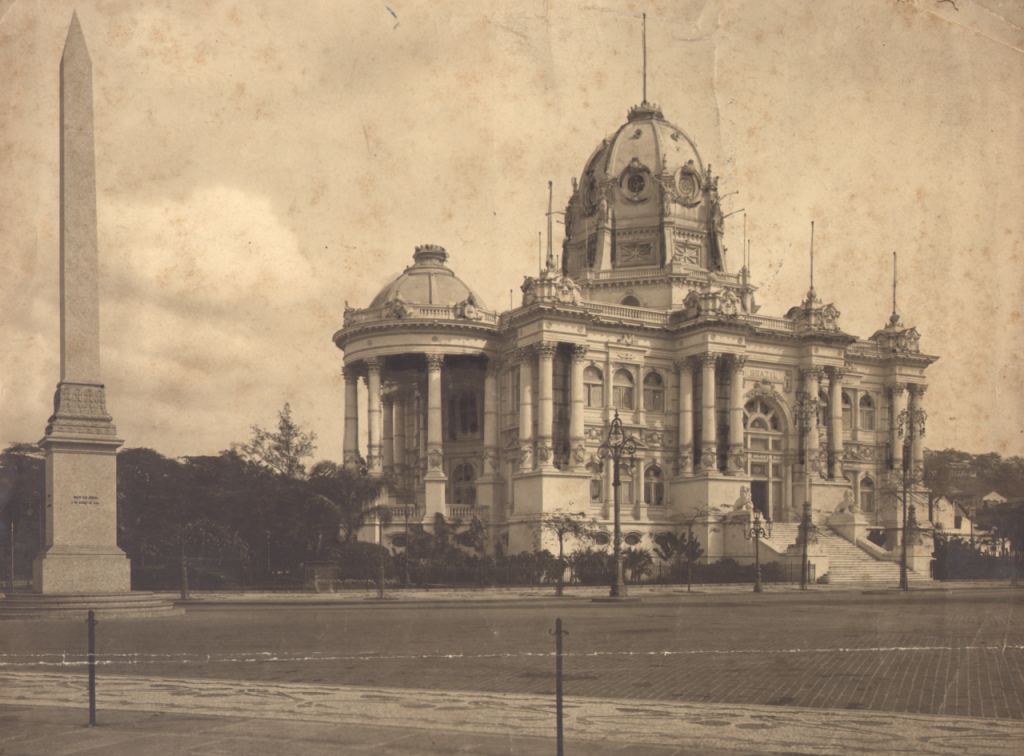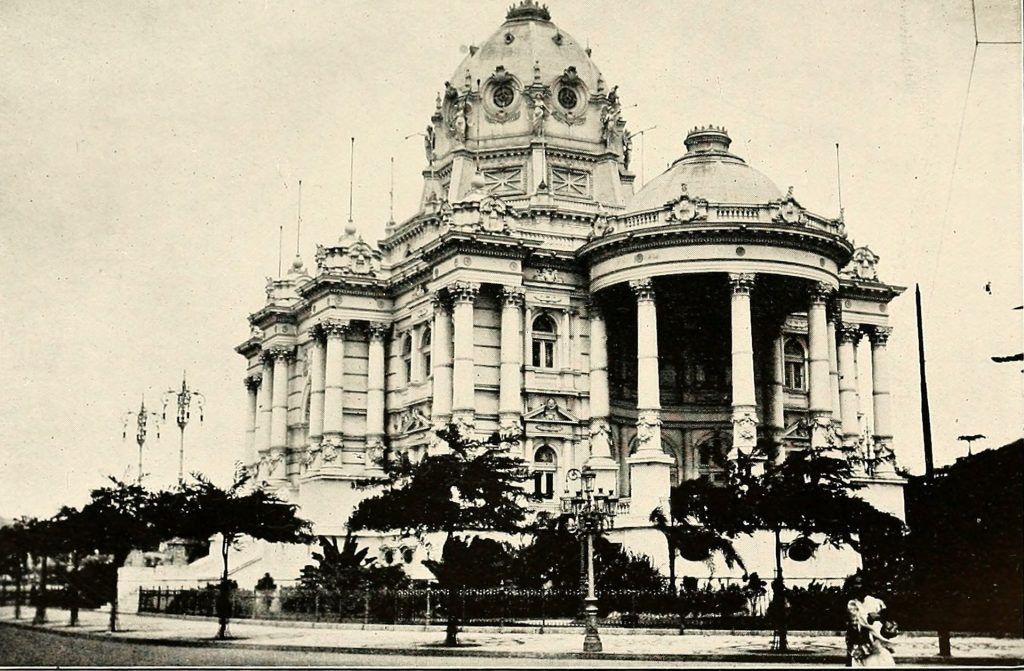
The Palácio Monroe Deception: Did Brazil Build It, or Was It Shipped Across Oceans?
A palace too perfect, a story too impossible.

Welcome back, truth-seekers, to Fabricated Foundations, where we unravel the Palácio Monroe mystery and peel back history’s layers. The official story claims this architectural marvel in Rio de Janeiro was built in 1904 for the St. Louis World’s Fair, dismantled, shipped across the Atlantic, and reassembled by 1906. But when you crunch the numbers—weights, ships, and logistics—this narrative crumbles. Was the Palácio Monroe mystery a feat of early 20th-century engineering, or a pre-existing structure repurposed to fit a fabricated timeline? Let’s dive in.
The Official Narrative: A Palace Shipped Overseas?
According to mainstream history, the Palácio Monroe was designed by American architect Frank P. Allen Jr. for the 1904 Louisiana Purchase Exposition in St. Louis, Missouri. This Beaux-Arts masterpiece, showcasing Brazil’s ambition, featured soaring columns, intricate ironwork, and a massive glass dome. After the fair, Brazil supposedly dismantled it, shipped it 5,000 miles, and rebuilt it in Rio as the Brazilian Senate by 1906. Learn more about the St. Louis World’s Fair.

- Design Phase: 1903
- Construction in St. Louis: 1904
- Dismantling & Shipping: 1904–1905
- Reconstruction in Rio: 1905–1906
A tidy two-year timeline for a global architectural relay. But the Palácio Monroe mystery deepens when we examine the materials and logistics, revealing cracks in this story.
The Materials: A Mountain of Stone and Steel
The Palácio Monroe wasn’t a temporary pavilion. It was a colossal structure:
- Footprint: 10,000 square meters of floor space.
- Materials: Granite and limestone cladding, steel framework, reinforced concrete foundations, and a glass dome with intricate iron latticework.
- Key Features: 30-meter-high columns, a 20-meter-wide dome, and thousands of decorative tiles.
Let’s estimate the weight:
- Granite & Limestone: Cladding required ~5,000–7,000 cubic meters of stone (granite: ~2.7 tons/m³, limestone: 2.3 tons/m³), totaling 12,000–18,000 tons.
- Steel Framework: Likely 1,000–2,000 tons, based on Beaux-Arts buildings like the Grand Palais. Explore Beaux-Arts architecture.
- Glass & Iron Dome: 500–1,000 tons, factoring in fragile panes and lattice.
- Total Weight: 15,000–25,000 tons, excluding interior fixtures.
This was no lightweight structure, yet it was supposedly moved across an ocean.
The Shipping Puzzle: An Impossible Voyage?
In 1904–1905, transatlantic shipping relied on:
- Early Steam Ships: Vessels like the SS Servia carried 3,000–5,000 tons per voyage.
- No Heavy-Lift Vessels: Cargo was loaded by hand or rudimentary cranes.
- Port Limitations: St. Louis (Mississippi River) and Rio’s docks weren’t equipped for mega-freight.
To move 15,000–25,000 tons:
- Number of Ships: 4–6 shiploads at 4,000 tons each.
- Voyage Time: 30–45 days per trip from St. Louis to Rio, totaling 6–9 months for round trips.
- Fragile Cargo: Glass panes and tiles, crated in straw, faced 30–50% breakage rates.
No shipping manifests, dock logs, or newspaper reports document this massive operation, despite the era’s detailed records. Why the silence on the Palácio Monroe mystery?
The Tech Gap: Could 1904 Tools Build and Rebuild?
Assuming the shipping occurred, the construction timeline raises questions:
- St. Louis Build (1904): Building 15,000+ tons of stone and steel in under a year, with hand tools and early cranes, in a city busy with other fair pavilions? Unlikely.
- Dismantling: Cataloging thousands of components without modern systems would take months.
- Rio Rebuild (1905–1906): Reassembling on new soil, with fresh foundations, in under a year? Improbable.
Compare to:
- Crystal Palace (1851): A modular structure took 6 months with advanced tech. Read about the Crystal Palace.
- Eiffel Tower (1887–1889): 2 years for a simpler frame.
The Palácio Monroe mystery suggests a timeline that defies 1904 technology.
The Inherited Hypothesis: A Hidden History?
What if the Palácio Monroe wasn’t built for 1904? What if it was a pre-existing structure, repurposed for Brazil’s narrative?
Consider:
- Architectural Style: Beaux-Arts echoes ancient structures like the Roman Pantheon. Could it tie to Tartarian theories? Explore Tartarian architecture.
- Missing Records: No construction photos, shipping logs, or worker testimonies, like the Otago Railway Station or Mercier Oak Barrel.
- Cultural Rebranding: Brazil, eager to prove modernity, could have claimed an inherited structure.
The Palácio Monroe mystery points to a possible remnant of a lost era, rebranded as a new build.
Why the Demolition Cover-Up?
The Palácio Monroe was demolished in 1976, officially to make way for Rio’s metro system. But why destroy a national landmark? Why no public outcry? And why are photos of the interior so scarce today?
Could it be that the structure revealed too much? That its perfection, its impossible construction, threatened to unravel a larger historical cover-up?
The Question They Fear
The Palácio Monroe mystery challenges history’s foundations. If this story is fabricated, what else is hidden?
Call to Action
What do you think? Could Brazil have achieved this transatlantic feat in 1904? Or is the Palácio Monroe mystery proof of a hidden past? Share your thoughts below and keep digging.
🔗 Visit fabricatedfoundations.com | Uncover what they covered up


Post Comment